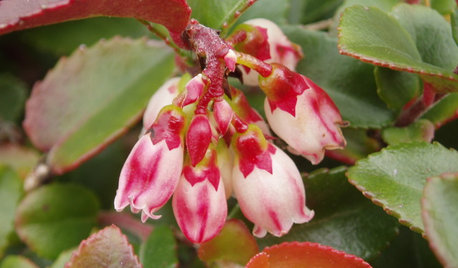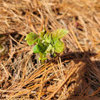Garden Huckleberry
Macmex
16 years ago
Related Stories

GARDENING GUIDESGreat Design Plant: Evergreen Huckleberry Appeals All Year
Spring flowers and summer berries are only half the story with Vaccinium ovatum, a versatile Pacific Northwest native plant
Full Story
LANDSCAPE DESIGNGarden Walls: Dry-Stacked Stone Walls Keep Their Place in the Garden
See an ancient building technique that’s held stone walls together without mortar for centuries
Full Story
LANDSCAPE DESIGNFind Yourself in an Epic Garden in the Shade
Feeling hot and tired gardening in the sun? The world of shade gardening beckons you to its cool mystery
Full Story
GARDENING AND LANDSCAPINGAlmost Invisible Outdoor Furniture Lets Views Star
No less stylish for all its modesty, barely there furniture for gardens, patios and decks is designed to offer a clear view of the landscape
Full Story
GARDENING AND LANDSCAPINGWorld of Design: 10 Home Gardeners Show Us Their Sweet Summer Harvests
From New York to Tokyo, these gardeners have turned their yards, terraces and rooftops into places of bounty
Full Story
GARDENING GUIDESHave Acidic Soil in Your Yard? Learn to Love Gardening Anyway
Look to acid-loving plants, like conifers and rhododendrons, to help your low-pH garden thrive
Full Story
INSPIRING GARDENSFrom Concrete Lot to Gracious Organic Garden in Seattle
Plants, pests and even weeds have a place in this landscape, which offers an edible bounty and a feast for the eyes
Full Story
NATIVE PLANTS5 Ways to Keep Your Native Plant Garden Looking Good All Year
It’s all about planning ahead, using sustainable practices and accepting plants as living organisms
Full Story
FARM YOUR YARD9 Ways to Change Up Your Vegetable Garden for the Coming Season
Try something new for edible plantings that are more productive than ever
Full Story
INSPIRING GARDENSHouzz TV: Curves and Surprises Transform a Dry Backyard
A landscape architect’s decision to build a detached studio leads to a whole new backyard full of low-water plants and salvaged treasures
Full Story






denninmi
MacmexOriginal Author
Related Professionals
Forest Park Landscape Architects & Landscape Designers · La Marque Landscape Architects & Landscape Designers · Canton Landscape Contractors · Burien Landscape Contractors · Deerfield Landscape Contractors · East Lake-Orient Park Landscape Contractors · Eustis Landscape Contractors · Santa Maria Landscape Contractors · North Aurora Landscape Contractors · Oceanside Driveway Installation & Maintenance · Beaumont Driveway Installation & Maintenance · Braintree Driveway Installation & Maintenance · Escondido Driveway Installation & Maintenance · Grand Rapids Driveway Installation & Maintenance · Palm Desert Driveway Installation & Maintenancewayne_5 zone 6a Central Indiana
tomakers
laceyvail 6A, WV
MacmexOriginal Author
denninmi
fliptx
petrowizard
MacmexOriginal Author
pnbrown
alan8
petrowizard
MacmexOriginal Author
wayne_5 zone 6a Central Indiana
petrowizard
mmqc101
rvgramma
MacmexOriginal Author
rvgramma
Pumpkin (zone 10A)
wayne_5 zone 6a Central Indiana
Pumpkin (zone 10A)
wayne_5 zone 6a Central Indiana
bcskye
prput68
wayne_5 zone 6a Central Indiana
farmerdill